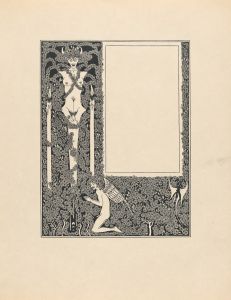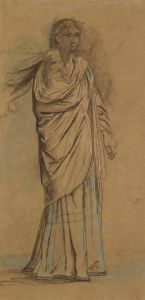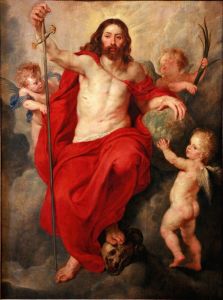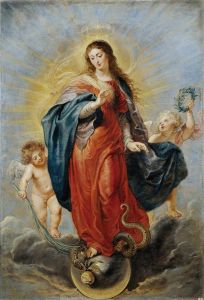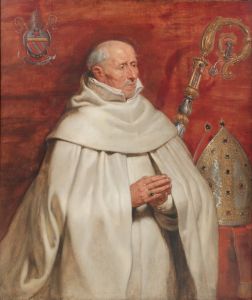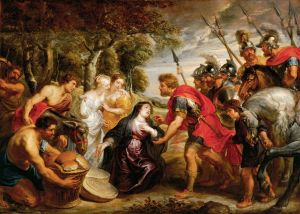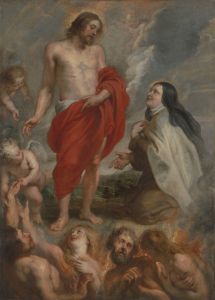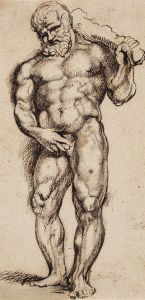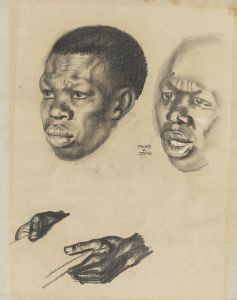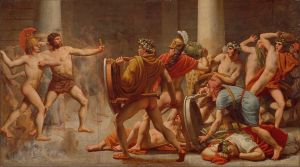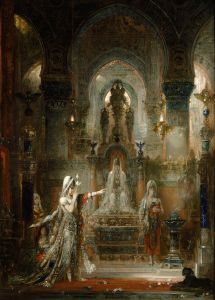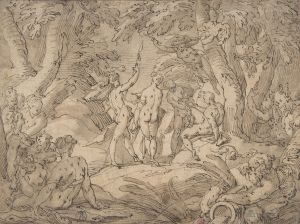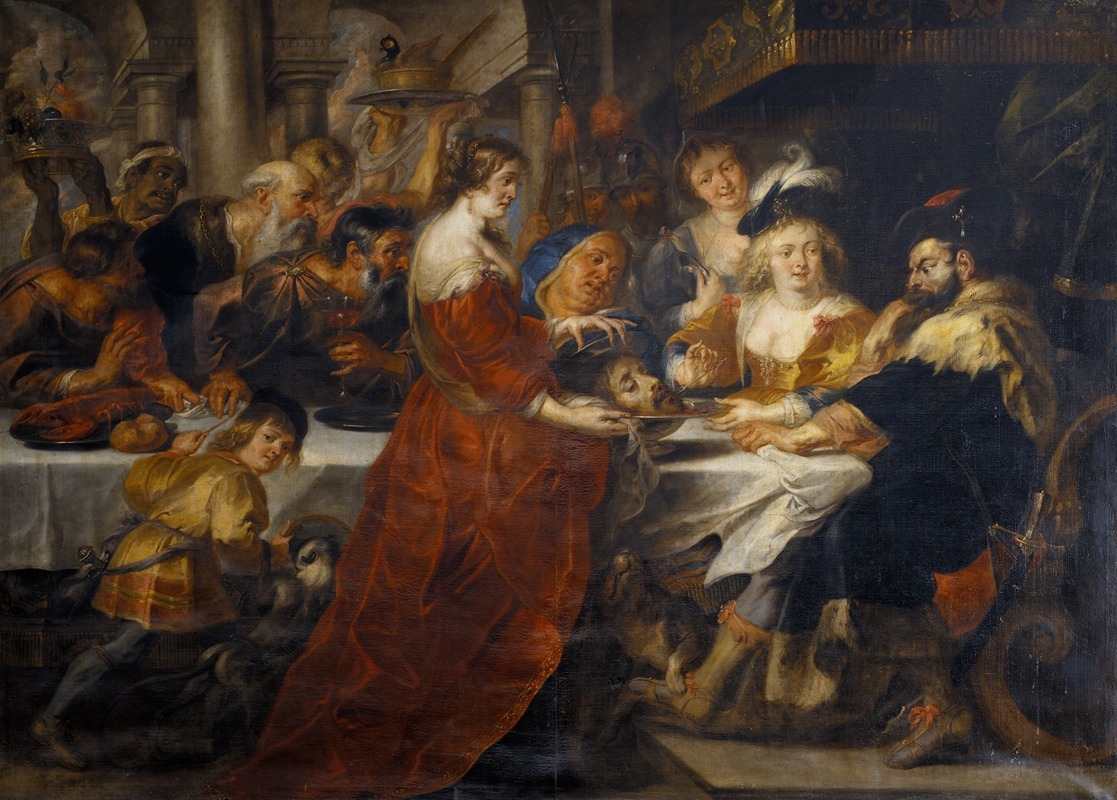
The Feast of Herod. Salome Bringing the Head of St John the Baptist on a Charger
A hand-painted replica of Peter Paul Rubens’s masterpiece The Feast of Herod. Salome Bringing the Head of St John the Baptist on a Charger, meticulously crafted by professional artists to capture the true essence of the original. Each piece is created with museum-quality canvas and rare mineral pigments, carefully painted by experienced artists with delicate brushstrokes and rich, layered colors to perfectly recreate the texture of the original artwork. Unlike machine-printed reproductions, this hand-painted version brings the painting to life, infused with the artist’s emotions and skill in every stroke. Whether for personal collection or home decoration, it instantly elevates the artistic atmosphere of any space.
Peter Paul Rubens, a prominent Flemish Baroque painter, created The Feast of Herod. Salome Bringing the Head of St John the Baptist on a Charger in the early 17th century. This painting depicts a dramatic biblical scene from the New Testament, specifically the events described in the Gospels of Matthew (14:1–12) and Mark (6:14–29). The artwork illustrates the moment when Salome presents the severed head of John the Baptist to her mother, Herodias, and King Herod Antipas during a banquet.
Rubens, known for his dynamic compositions, vivid use of color, and mastery of human anatomy, captures the emotional intensity of the scene. The painting portrays the key figures in the narrative: Salome, Herodias, and Herod Antipas. Salome, often depicted as a young and beautiful woman, is shown holding a charger (a large platter) with the head of John the Baptist. Herodias, her mother, is typically portrayed as a figure of malice or satisfaction, reflecting her role in orchestrating John’s execution. Herod Antipas, the ruler of Galilee, is often depicted with a conflicted or indifferent expression, highlighting his reluctant compliance with Salome's request.
The composition of the painting is characteristic of Rubens' style, with dramatic contrasts of light and shadow, dynamic poses, and rich, detailed textures. The figures are arranged in a way that draws the viewer's attention to the central action, emphasizing the emotional and moral gravity of the moment. Rubens' use of color, particularly the deep reds and golds, enhances the opulence of the setting while underscoring the violence and drama of the scene.
The painting reflects Rubens' deep engagement with classical and biblical themes, as well as his ability to convey complex narratives through visual art. It also demonstrates his skill in capturing human emotion and interaction, which were hallmarks of the Baroque period. Rubens often drew inspiration from earlier Renaissance artists and classical antiquity, blending these influences with his own innovative techniques.
The exact date of the painting's creation is not definitively known, but it is generally attributed to Rubens' mature period, when he was at the height of his artistic powers. The work is believed to have been commissioned for a private patron or a religious institution, as was common for such dramatic biblical scenes during the Baroque era.
Today, The Feast of Herod. Salome Bringing the Head of St John the Baptist on a Charger is recognized as a significant example of Rubens' ability to combine technical mastery with compelling storytelling. The painting is housed in a museum or private collection, though specific details about its current location or provenance may vary depending on the source.





